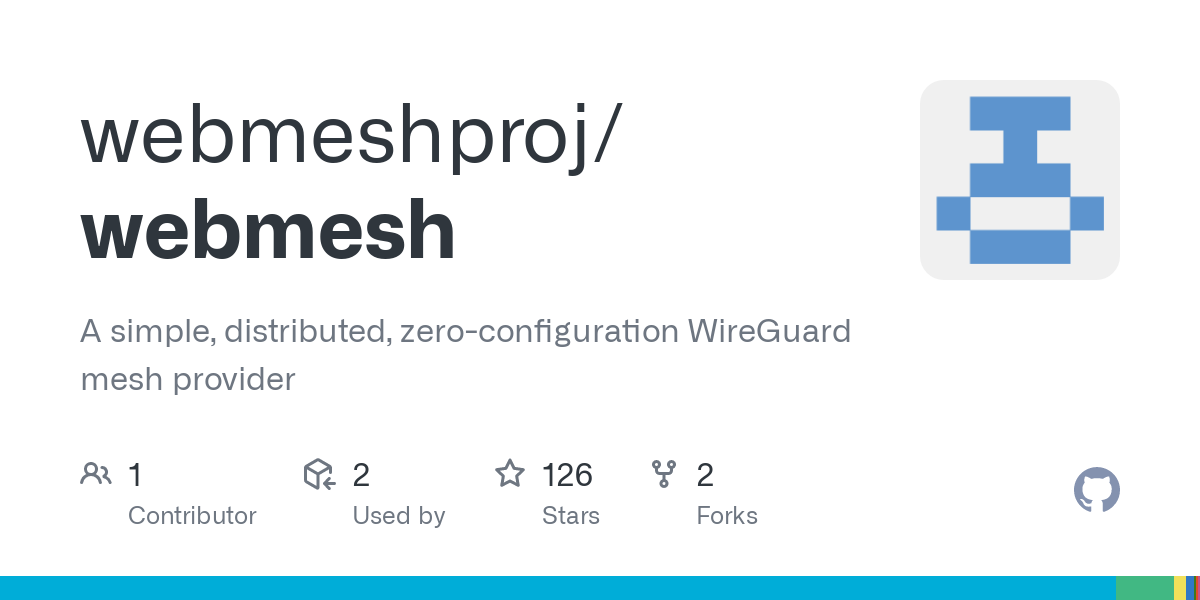- cross-posted to:
- [email protected]
- [email protected]
- cross-posted to:
- [email protected]
- [email protected]
Hey all!
Dropping my Webmesh project (https://github.com/webmeshproj/webmesh) again as I’ve just reached a major milestone in my development towards making it a viable product. Webmesh is yet another pass at creating a distributed service/application mesh/VPN using WireGuard. More infoz is on the project website: https://webmeshproj.github.io/
With the new “mesh bridge” capabilities, you can run a bridge node between two or more meshes that serves to forward appropriate traffic between them. It also offers DNS forwarding capabilities to lookup internal names across meshes. This is accomplished by running two or more IPv6 only wireguard interfaces connected to each mesh and sharing routes between them. IPv4 support is planned, but honestly may not even be necessary. You can see a reference example/playground here: https://github.com/webmeshproj/webmesh/tree/main/examples/mesh-to-mesh
Excited for your feedback :)
deleted by creator
Curious , isn’t this what Tailscale does also. It’s a cool project none the less.
It’s extremely similar to Tailscale, and they are a major source of inspiration for a lot of the functionality.
The main difference is I am using a controller-less setup where each node maintains the state of their mesh via raft consensus. If a controller server goes down, another node will pick up the leader responsibilities. When requests come in that need to mutate network state, nodes will automatically forward the request to the leader node for you.
So kinda like a Tailscale - where you can disconnect and branch off at any time. Think…federated networks.
Following this for the future. I had tried out netmaker but it was still a bit too alpha
Looks interesting, bookmarking to try this out.
Is it fair to say Webmesh is your open source version of Nord VPN’s Meshnet? https://meshnet.nordvpn.com/
Maybe? Quite possibly it seems. I’m not famiilar with it too much.
Very neat! Definitely a project I’d like to follow.
Makes me wonder if something similar could be implemented using frr, ospf, and ansible.
Almost certainly. At its core - everything happening could be accomplished with just regular configuration files. It’s just a suite around maintaining the state basically.
I was considering adding FRR or BGP to the mix at some point - but it hasn’t proven necessary yet.



